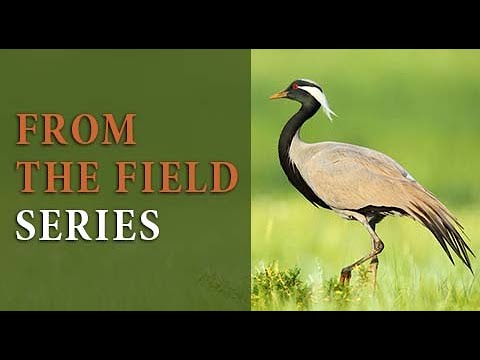– The essential role of The Middle East Crane Conservation Group in safeguarding crane populations
– The strategies implemented by The Middle East Crane Conservation Group for habitat preservation
– Education and community engagement efforts led by The Middle East Crane Conservation Group
– The significance of international collaboration in wildlife conservation, as demonstrated by The Middle East Crane Conservation Group
The world witnesses several wildlife conservation initiatives that play pivotal roles in preserving biodiversity. The Middle East Crane Conservation Group (MECCG) stands out for its dedicated efforts in safeguarding crane species and their habitats. With an active stance on conservation, supported by thorough research and habitat restoration, MECCG’s work embodies a strategic approach to sustaining crane populations in the Middle East. This article delves into the vital work conducted by MECCG, showcasing its fundamental objectives, methodologies, and overarching impact on crane conservation.
**The Essential Role of The Middle East Crane Conservation Group in Safeguarding Crane Populations**
Cranes, with their striking presence and intricate mating dances, have long fascinated humans, symbolizing luck, longevity, and fidelity in several cultures. However, these majestic birds face numerous threats, from habitat loss to illegal hunting, necessitating focused conservation efforts. The MECCG is at the forefront of these efforts, conducting extensive research to identify critical crane habitats, monitor population dynamics, and assess threats to crane survival. Collecting and analyzing data, the group identifies areas of concern and prioritizes actions to protect these vulnerable species.
**The Strategies Implemented by The Middle East Crane Conservation Group for Habitat Preservation**
Understanding that the survival of cranes is intricately linked to their habitat, The Middle East Crane Conservation Group adopts a holistic approach to conservation. One of the group’s primary strategies is habitat restoration. This involves promoting sustainable land use practices that benefit local wildlife and human communities. The MECCG works closely with farmers, landowners, and governmental bodies to encourage adopting practices that maintain or improve the ecological integrity of crane habitats.
Water management is another critical aspect of their habitat preservation efforts. Since many crane species depend on wetlands for breeding and feeding, maintaining these water bodies’ health is crucial. The group supports initiatives to clean up and restore rivers, lakes, and marshlands. Additionally, the MECCG creates protected areas to ensure safe breeding grounds for cranes away from human disturbances.
**Education and Community Engagement Efforts Led by The Middle East Crane Conservation Group**
Awareness and support from local communities are indispensable for the success of conservation projects. The MECCG strongly emphasizes educational programs and community engagement as part of its conservation strategy. By organizing workshops, lectures, and field visits, the group seeks to inform and inspire individuals about the importance of crane conservation and the role they can play in it. The involvement of local communities ensures a sustainable coexistence between humans and cranes, fostering a shared responsibility toward preserving these birds and their habitats.
**The Significance of International Collaboration in Wildlife Conservation**
Like many other facets of wildlife protection, Crane conservation benefits greatly from international cooperation. The migratory nature of many crane species means that activities in another can undermine conservation efforts in one country. Recognizing this, The Middle East Crane Conservation Group actively participates in international networks, sharing data, strategies, and resources with counterpart organizations worldwide. This collaborative approach enhances the effectiveness of conservation efforts, creating a cohesive strategy that transcends national borders.
Through the dedicated efforts of The Middle East Crane Conservation Group and its focus on research, habitat restoration, community engagement, and international cooperation, the future of cranes in the Middle East looks hopeful. However, the continued success of these initiatives depends on widespread support from local communities and international partners. As indicators of healthy ecosystems, Cranes signal the importance of concerted conservation actions. The work of MECCG highlights the critical need for an integrated approach to wildlife preservation, cementing the idea that safeguarding the natural world is a shared responsibility that benefits us all.
*****
Source Description
https://savingcranes.org/webinars/ Shooting of cranes in the Middle East has resulted in the extirpation or disappearance of Critically Endangered Siberian Cranes that recently wintered in Iran and India. Now, there is growing evidence that uncontrolled shooting in several nations in this region is resulting in the decline of migratory populations of Demoiselle and Eurasian Cranes. Consequently, the International Crane Foundation has recently established a Middle East Crane Conservation Group (MECCG), which includes kindred spirits in many Middle East nations.
Wali Modaqiq, an Afghan colleague of the International Crane Foundation since 2002, has immigrated with his family to live near our headquarters in Baraboo, Wisconsin. With assistance from our Co-Founder Dr. George Archibald and Russian colleague Dr. Elena Ilyashenko, Wali hopes to lead MECCG. Currently, we are supporting colleagues in Pakistan and Turkey in their efforts to help the cranes.
Our presentation will describe the International Crane Foundation’s history in the Middle East, current activities and future aspirations for the welfare of cranes in the region.
Sponsored by the Chauncey and Marion D. McCormick Family Foundation.

